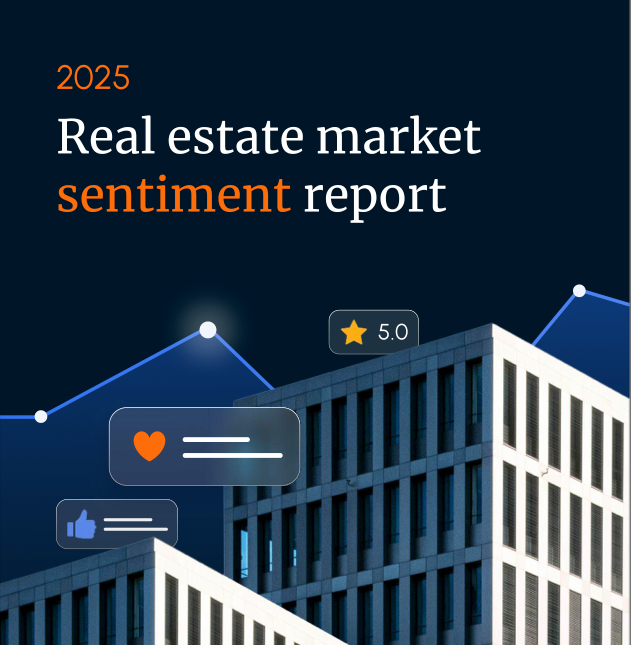Commercial Real Estate in 2025: Adapting to Volatility and Finding Opportunity
- Industry News

- Oct 8
- 4 min read
By Robert Khodadadian, Skyline Properties
The 2025 commercial real estate market continues to test even the most seasoned investors. Interest rates remain at 15-year highs, inflation is squeezing margins, and capital markets are tighter than they’ve been in years. Yet amid this volatility, opportunity remains for those who know where to look — and how to adapt.
A recent national sentiment survey of 200 U.S. real estate professionals offers a revealing look into how investors are responding to today’s economic conditions. The findings confirm what we’re seeing on the ground at Skyline Properties: the market isn’t frozen — it’s recalibrating.
A Market in Motion: 44% of Firms Shift Strategies
According to the report, 44% of firms have changed their investment plans in response to volatility, while another 21% are actively considering changes. Only 35% remain steady — a sign that adaptability is now a key performance metric.
Younger professionals, particularly Gen Z and Millennials, are leading this evolution, with nearly 70% already modifying their strategies. The next generation of investors isn’t afraid to pivot, and their willingness to explore new asset types and markets is setting the tone for 2025. At Skyline, we’re witnessing similar momentum: buyers are more selective, but they’re still active. Strategic repositioning — not retreat — defines this cycle.
Multifamily and Mixed-Use Lead 2025 Priorities
Multifamily (51%) continues to dominate investor focus, followed closely by mixed-use (33%) and industrial (22%). These are asset classes that historically provide stable income streams, even during uncertainty. Office and retail, each at 20%, remain subdued — a reflection of evolving work and consumer habits. Hospitality lags at just 8%, underscoring lingering caution around discretionary travel and leisure assets. Interestingly, the Southwest region reported the strongest shift into new asset classes (82%), while the Northeast and Midwest are showing more traditional risk profiles.
At Skyline, we see the same bifurcation in New York: institutional capital continues to favor multifamily conversions, while private groups are quietly accumulating distressed office assets for long-term repositioning.
Where the Money’s Moving: Regional Focus
Geographically, the Southeast (28%) and Southwest (26%) lead as preferred regions for new investment — markets known for population inflow, business-friendly policy, and steady absorption. The Northeast (25%) still holds its ground, particularly for investors seeking trophy assets in prime locations.But perhaps the most telling data point: 16% of respondents are now pursuing nationwide strategies, signaling a renewed appetite for diversification. In times of uncertainty, range and flexibility win.
The Sentiment Shift: Opportunistic Yet Cautious
Nearly half of respondents (47%) describe their current posture as opportunistic — actively seeking undervalued or distressed assets. Another 25% are aggressive, while 17% are defensive. This aligns with Skyline’s core philosophy. We’ve always believed that market dislocation creates opportunity — provided you know how to underwrite risk and structure your deals intelligently.
In today’s environment, the best returns come not from chasing cap rates, but from identifying situations: transitional assets, distressed debt, and zoning-driven upside, such as office-to-residential conversions — a trend that’s accelerating rapidly across Manhattan.
Capital Is Scarce — and Selective
58% of firms report fundraising has become more difficult, and 76% say their investors are concerned about volatility. Limited partners are prioritizing transparency, liquidity, and real-time performance visibility — metrics that require sharper investor communication and better data infrastructure. To their credit, firms are responding: 38% now send weekly investor updates, and 27% provide monthly reports. This level of transparency is not just about reassurance — it’s a competitive advantage. At Skyline, we’ve expanded our own investor reporting systems to mirror institutional standards. Real estate has become data-driven, and the winners will be those who communicate clearly and frequently.
Investor Mindset: Defensive, But Engaged
While investors are cautious, they’re not disengaged. The survey found that 50% of firms are actively advising investors to stay active — focusing on long-term fundamentals, selective acquisitions, and disciplined underwriting.
As one respondent put it: “Stay calm, be selective, and be ready to act.” That’s precisely the mentality shaping Skyline’s approach: assess every deal on its merit, anticipate where liquidity is moving, and prepare to strike when pricing aligns with fundamentals.
Recession Fears and Strategic Adjustments
When asked about the possibility of a U.S. recession in 2025, 45% said no, 38% said yes, and 17% remain unsure— a perfectly divided sentiment that mirrors broader market ambiguity. If a downturn does occur, 41% plan to focus on distressed buying, while 40% would double down on asset management efficiency. In short, the industry is ready to play offense and defense simultaneously.
Looking Ahead: A Year of Selective Optimism
Despite uncertainty, this is not a market in decline — it’s a market in transformation. Firms expect volatility to persist for another 12.9 months on average, but the pivot toward resilient sectors and smarter capital deployment is already underway. As someone who’s lived through multiple cycles — from 2008 to COVID-19 — I can say confidently that this environment, while challenging, is ripe with strategic opportunity. The data tells one story, but the street tells another: liquidity is waiting for clarity. For those who stay informed, agile, and ready to move, 2025 could mark the start of the next major repositioning wave in U.S. commercial real estate.
Final Takeaway
The message is clear: volatility breeds opportunity. Multifamily, mixed-use, and adaptive reuse will define this cycle. Investors who embrace transparency, technology, and timing will lead the next phase of growth.At Skyline Properties, we’re not waiting for the market to “stabilize” — we’re building the next chapter while others are still watching the headlines.











Comments